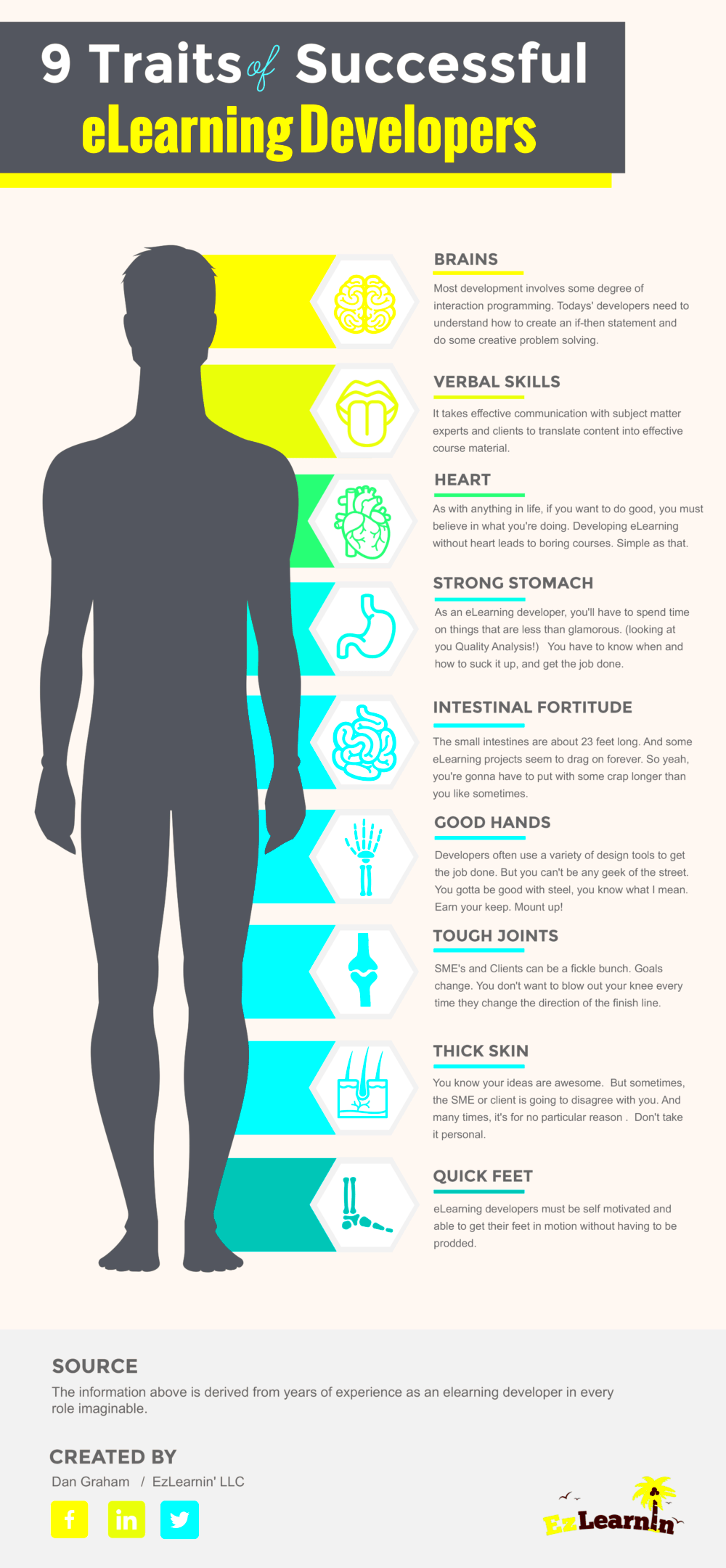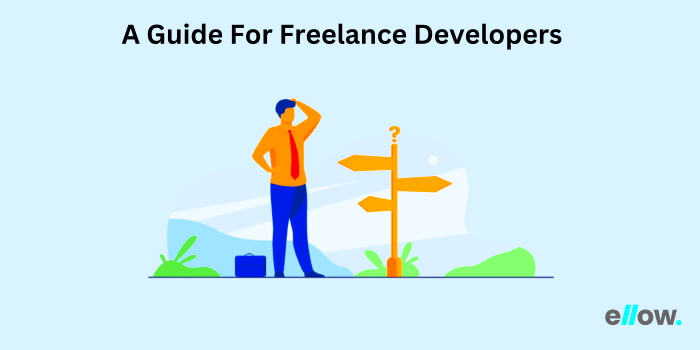The role of eLearning developers in the domain of web-based education is vital. Engaging and interactive learning experiences produced by them enable students to comprehend easily new ideas. Course designing, content creation, use of different tools and techniques to develop materials according to educational requirements form part of it. In this field where online learning is becoming increasingly popular, it is important for people to know what eLearning developers do.
Basically what an eLearning developer does:
- Designs and develops online courses.
- Creates multimedia content, including videos, quizzes, and interactive elements.
- Collaborates with subject matter experts to ensure accuracy.
- Tests and evaluates eLearning materials to ensure they are user-friendly.
- Stays updated with the latest eLearning trends and technologies.
A creative imagination, technical expertise and a profound grasp of learning theories are prerequisites for this position. The need for competent e-learning developers will increase as more companies start shifting towards online training systems.
Identifying Essential Skills and Qualifications

In order to be a successful eLearning builder, one should have both technical skills for the job, educational understanding and creativity. Given below are some of the key skills and qualifications you need to remember:
- Instructional Design: Understanding how people learn is key. Familiarity with instructional design models, such as ADDIE or SAM, can help you create effective courses.
- Technical Proficiency: Knowledge of authoring tools like Articulate Storyline, Adobe Captivate, or Camtasia is essential for developing interactive content.
- Graphic Design: Basic graphic design skills will enhance the visual appeal of your courses. Knowing how to use tools like Adobe Photoshop or Canva can be beneficial.
- Project Management: Managing multiple projects and deadlines requires good organizational skills. Familiarity with project management tools can streamline this process.
- Communication Skills: You need to communicate effectively with clients and subject matter experts to gather requirements and feedback.
Even though formal qualifications may be useful, practical experience and a good portfolio sometimes say more than certificates do. Attaining developer certificates in instructional design or eLearning will also maintain your reliability.
Also Read This: A Service a Seller Offers on Fiverr: Unlocking Opportunities for Success
Creating an Effective Portfolio for Your Work

In the sphere of freelance eLearning modern development, your interacting is like a standard card. This becomes the first contact with probably customers who will assess what you can do as far as creativity and ability are concerned. To create an outstanding portfolio, here are some steps:
- Showcase a Variety of Work: Include samples that demonstrate your range, from interactive courses to video content. Highlight different subjects and formats to appeal to various clients.
- Provide Context: For each piece, add a brief description that explains your role, the project's goals, and the outcome. This helps clients understand the impact of your work.
- Use Engaging Design: Ensure your portfolio is visually appealing. A clean, professional layout will keep visitors engaged. Consider using platforms like Behance or creating your own website.
- Include Testimonials: If you have worked with clients, ask for feedback and include their testimonials in your portfolio. Positive reviews build trust with potential clients.
- Keep it Updated: Regularly add new projects to showcase your latest work. An up-to-date portfolio reflects your current skills and keeps you relevant in the industry.
As an eLearning developer, a portfolio demonstrating your skills and portfolio must be designed with quality and presentation in mind.
Also Read This: Fiverr’s Top 10 Sellers for 2024
Finding Freelance Opportunities in eLearning
It’s actually quite thrilling and difficult to get jobs online in the eLearning industry. Along with online learning’s immense growth, several places and platforms are waiting to be discovered. You need to have an idea of where to look for and how to present yourself so as to capture the attention of your targeted customers. Below are a few proven methods that can help you locate such jobs:
- Freelance Platforms: Websites like Upwork, Freelancer, and Fiverr are great places to start. Create a detailed profile highlighting your skills and previous work. Regularly bid on projects that align with your expertise.
- Job Boards: Websites such as Indeed, SimplyHired, and Remote.co often list freelance eLearning positions. Use keywords like “eLearning developer” or “instructional designer” to find relevant jobs.
- Networking Events: Attend industry-related conferences, webinars, and workshops. These events provide opportunities to connect with potential clients and other professionals.
- Social Media: Leverage platforms like LinkedIn and Twitter to showcase your expertise. Share your work, engage with others in the field, and join relevant groups or discussions.
- Referrals: Don’t hesitate to reach out to past clients or colleagues. Word of mouth can lead to new opportunities, so ask for referrals if they are satisfied with your work.
By steadily chasing chances and taking advantage of your connections, you will easily discover contracting jobs on eLearning sector.
Also Read This: Steps to Becoming a Freelance Voice-Over Artist
Building a Professional Network
For freelancers, especially those in eLearning, a solid professional network is crucial. A strong network can lead to new possibilities, opportunities for collaboration, as well as important insights. Below are some useful tips on how to grow your network:
- Join Professional Organizations: Becoming a member of associations like the Association for Educational Communications and Technology (AECT) or the International Society for Technology in Education (ISTE) can provide networking opportunities and resources.
- Engage on Social Media: Platforms like LinkedIn are perfect for connecting with industry professionals. Share your thoughts on eLearning trends, comment on posts, and join groups focused on your niche.
- Attend Local Meetups: Look for local meetups or events related to eLearning or instructional design. These gatherings can help you meet others in your field and create lasting connections.
- Collaborate on Projects: Team up with other freelancers on projects. Collaboration not only enhances your skills but also expands your network as you meet new professionals through your partners.
- Follow Up: After meeting someone new, send a quick message to keep the connection alive. Share an article or resource that might interest them, showing that you value the relationship.
To create and keep a career network requires energy and persistence, yet might greatly influence your freelance life.
Also Read This: How to Set Out of Office on Fiverr: A Step-by-Step Guide
Setting Your Rates and Managing Finances
Freelancing has unarguably become one of the most complex things, with no clear cut guidelines on how to come up with your rates and manage finances. Setting appropriate chargeout rates is very important in ensuring that business remains operational. The following are some of the ways on how to do it:
- Research Market Rates: Look at what other eLearning developers charge for similar services. Websites like Glassdoor or PayScale can provide insights into typical salary ranges.
- Consider Your Experience: If you’re just starting, it’s okay to charge lower rates to attract clients. As you gain experience and build a portfolio, gradually increase your rates.
- Choose a Pricing Model: Decide whether to charge hourly or by project. Each model has its pros and cons, so consider which suits your workflow best.
- Track Your Income and Expenses: Use tools like QuickBooks or Wave to keep tabs on your finances. Tracking your income and expenses helps you understand your profitability and makes tax season easier.
- Set Aside Money for Taxes: As a freelancer, you’re responsible for your taxes. Set aside a portion of your income regularly to ensure you have enough when tax time rolls around.
Running a successful freelance business in eLearning entails competitive pricing and numerous other income management options as well.
Also Read This: Why Is My Fiverr Gig Not Showing Up?
Ensuring Quality and Client Satisfaction
It is significant to ascertain quality in eLearning projects not only for your public image, but also for the contentment of customers. Satisfied clients would tend to engage your services again as well as recommend you to other individuals. To accomplish this, you have to consider various important elements in your job:
- Clear Communication: From the start, communicate openly with your clients about their expectations. Regular updates on progress can help manage their expectations and build trust.
- Understand Client Needs: Take the time to thoroughly understand the client’s objectives and target audience. This understanding is essential for creating effective eLearning content.
- Solicit Feedback: Encourage clients to provide feedback during the development process. This can help you catch any issues early and adjust your work to meet their preferences.
- Test Your Content: Before delivering the final product, conduct thorough testing to ensure everything works as intended. Check for usability and functionality to avoid any last-minute surprises.
- Deliver on Time: Meeting deadlines is critical. Consistently delivering work on time shows professionalism and respect for your client’s time.
Many possibilities await you in future if you invest into building a good name for yourself by concentrating on quality and ensuring that your clients are happy within the eLearning industry
Also Read This: How to Become a Seller on Fiverr
Continuously Improving Your Skills and Knowledge
The universe of eLearning is continually transforming, and as a worker for yourself, it’s pivotal to keep yourself informed on fresh trends and technologies. Ongoing enhancement of skills does not only improve what you have but also enable you to remain in a highly competitive state. The following are several practical methods of investing in your career development:
- Online Courses: Platforms like Coursera, Udemy, and LinkedIn Learning offer a variety of courses on instructional design, eLearning tools, and the latest technologies.
- Webinars and Conferences: Attend webinars and industry conferences to learn from experts, network with peers, and gain insights into the latest trends in eLearning.
- Read Industry Blogs and Journals: Stay informed by following blogs and publications focused on eLearning and instructional design. This can help you discover new ideas and best practices.
- Practice New Tools: Familiarize yourself with new eLearning development tools and software. Hands-on practice will help you understand their features and how they can enhance your projects.
- Join Professional Groups: Being part of online forums or local meetups can expose you to different perspectives and ideas, helping you learn from the experiences of others.
Not only do your clients reap the benefits of investing in your skills but also it creates confidence and creativity in you if looked from perspective of work.
Also Read This: Can’t Log Out of Fiverr? Here’s What You Need to Know
Frequently Asked Questions
In eLearning’s early stages, a lot of questions may cross your mind. Common concerns can be clarified by the following frequently asked questions:
- What qualifications do I need to become an eLearning developer? While formal education in instructional design or a related field can be beneficial, practical experience and a strong portfolio are often more important.
- How do I find clients as a freelancer? You can find clients through freelance platforms, job boards, networking events, and by building a strong online presence on social media.
- What tools do I need for eLearning development? Common tools include Articulate Storyline, Adobe Captivate, Camtasia, and learning management systems like Moodle or TalentLMS.
- How should I set my rates? Research market rates and consider your experience and the complexity of the project. It’s a good idea to adjust your rates as you gain more skills and experience.
- How can I ensure client satisfaction? Maintain clear communication, understand their needs, provide regular updates, and ask for feedback throughout the project.
The questions answered in this FAQ section highlight some basic matters that need to be considered however remember the fact that your path as an eLearning developer is different. Do not hesitate to talk to colleagues for more specific guidance!
Conclusion
In order to set out on a career as a freelance eLearning developer, there are both promises as well as problems to be faced. You are well on your way to achieving success by understanding what it entails, acquiring basic skills, developing a circle of professionals and ensuring that you deliver quality work. For you to remain competitive in this field always endeavor to know the current trends through which one can gain knowledge so that they can advance their own abilities. It might take some time before one gets possible jobs but through determination and networking with those who might help helps pay off. After all, satisfying clients is the secret of having longevity in business hence turning them into habitually returning customers or referral sources is an impetus for more business. Therefore, take up this challenge and you will find joy and development in your career as a freelancer.




